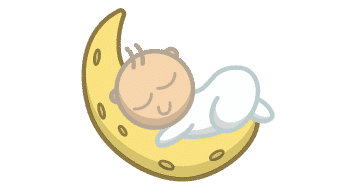PPA pregnancy describes anxiety that appears during pregnancy or after birth and interferes with daily life. The pattern often includes a steady sense of dread, racing thoughts, and physical tension that make sleep and appetite harder to manage. Many families hear a lot about depression after delivery, yet anxiety can stand on its own or overlap with low mood, which is why clinicians often discuss PPD PPA together. This guide explains what the terms mean, how symptoms can look in real life, which risks make anxiety more likely, and how treatment restores steadier days.
PPA pregnancy definition
Within perinatal care, postpartum anxiety is persistent worry during pregnancy or in the months after birth that disrupts routines, reduces sleep quality, and colors everyday decisions. Worry becomes constant rather than occasional. Thoughts stick and loop, especially around health, safety, feeding, and sleep. The mind feels busy even when the room is quiet. Muscles tense without a clear reason, and the heart may race during calm moments. These experiences go beyond the short jitters of new parenthood. The difference shows up in duration and in how much they limit daily life. Health teams use screening questions to identify patterns and look at timing, intensity, and impact on bonding, nutrition, and rest.
PPA pregnancy symptoms and related experiences
Symptoms vary, yet several themes repeat. Many describe a stream of postpartum thoughts that feel intrusive and hard to pause. Some notice postpartum insomnia, waking often or lying awake even when the baby sleeps. Others describe postpartum forgetfulness, especially on days when worry drains attention. Physical signs can include a tight chest, a churning stomach, trembling, headaches, and dizziness.
Panic-like surges may appear in cars, waiting rooms, or at bedtime, which some label as an anxiety attack while pregnant if the first episode began before delivery. These symptoms can start late in pregnancy or in the first months after birth. They may fade and return depending on sleep, feeding challenges, and support. Even when anxiety peaks, the pattern is treatable. With a sound plan, most people notice relief and a clearer head.
PPA pregnancy risk factors
- Personal history: Previous anxiety or depression raises the chance of PPA pregnancy during the perinatal year.
- Family and coping patterns: Family history and learned coping styles can make stress responses stronger.
- Medical stressors: Complications, difficult deliveries, or neonatal stays increase vigilance and worry.
- Social pressure: Isolation, job strain, and financial stress keep the nervous system on high alert.
- Sleep and loss: An anxious mother facing bereavement, infertility treatment, or chronic sleep loss may have more persistent symptoms.
- Daily loop: Mum anxiety often describes the cycle where worry grows as rest shrinks.
- Why risk matters: The goal of naming risks is earlier support not blame because quicker identification usually speeds recovery.
Why biology and life changes both matter
There is no single cause. Biology and life events intersect. Hormones shift before and after delivery and can affect mood, tension, and sleep. Estrogen and progesterone rise during pregnancy and change quickly after birth. Thyroid shifts can influence energy and thinking. A brain adapting to infant care pays more attention to threat and routine, which is useful for safety yet uncomfortable when the volume is high. Real-world stress adds to the load: night feeds, healing, learning new tasks, and adjusting to fresh roles. When everything converges, the nervous system can stay revved up, and support for ppa mental health becomes a practical way to reset.
PPA pregnancy anxiety and depression
Anxiety and depression often sit side by side, which is why care teams speak about ppd ppa during screening. Depression leans toward sadness, emptiness, loss of interest, and guilt. Anxiety leans toward fear, constant worry, and a sense that danger is close.
Many people feel both at once, and the mix can change by week. Clear screening helps build a plan that covers both when needed. The plan can include therapy, practical support at home, and, when appropriate, postpartum anxiety medication chosen for safety in pregnancy or lactation with individual review.

Treatment options
Care usually starts with therapy because skills reduce symptoms and build confidence. Cognitive behavioral approaches help challenge worry loops, shift unhelpful predictions, and set steady routines for sleep and meals. Some clinicians add mindfulness-based strategies to increase body awareness and shorten anxious episodes.
When symptoms are moderate to severe, or when therapy progress stalls due to intensity, postpartum anxiety medication can be added after discussion with a clinician who knows perinatal care. Choices are selected for safety and reviewed within pregnancy and feeding plans. People who describe an anxiety attack while pregnant often benefit from grounding skills, breathing practices, and follow-up visits that track improvement. Across plans, the theme is gradual relief and a return to regular days, not perfection.

Daily routines that make recovery more
Daily support makes treatment stick. Many do better with a simple morning routine that includes light exposure, hydration, a small snack with protein, and a brief movement block. Short relaxation practices help release tension and reduce spirals. Gentle limits on stimulating media in the evening protect sleep and make postpartum insomnia easier to manage. A scheduled worry period can move concerns onto paper rather than into midnight. Labeling intrusive postpartum thoughts and shifting attention back to a chosen task is a learned skill that improves with practice.
Postpartum OCD and related patterns
Some notice a form of anxiety in PPA pregnancy where intrusive thoughts are paired with repeated checks or rituals. Doors and stoves are rechecked, hands are washed again and again, and objects are lined up to quiet a fear. This can look like postpartum OCD and may overlap with anxiety after birth. The thoughts are ego-dystonic, which means they do not match personal values, and that gap drives distress. Therapy that includes exposure and response prevention helps reduce the urge to neutralize fear with a ritual. When indicated, medication can be added alongside therapy. Many recover with consistent care and practical support at home.
Panic disorder in the postpartum period
Panic symptoms can appear out of the blue after birth even for people who never had them before. Surges may last minutes, feel longer, and include chest tightness, fast heartbeats, shortness of breath, sweating, tingling, nausea, and a sense of losing control. This may be labeled as postpartum panic disorder if the pattern repeats. Care teaches skills to ride the waves and reduce fear of the symptoms themselves. When episodes began during pregnancy, some described them as an anxiety attack while pregnant and felt relief once they learned what was happening and how to respond.
Pregnancy Associated Plasma Protein-A (PAPP-A)
During first-trimester combined screening, labs measure a placental protein called Pregnancy Associated Plasma Protein-A. A low PAPP-A result can signal a higher chance of issues such as fetal growth restriction or high blood pressure later in pregnancy, which is why clinicians may recommend closer monitoring, additional scans, or low-dose aspirin when appropriate under obstetric guidance.
Most pregnancies with a low value progress well, and PAPP-A is a screening marker rather than a diagnosis. Because the term appears in prenatal portals alongside many numbers, it can raise worry and may intensify anxiety patterns already present in PPA pregnancy. A short conversation with an obstetric clinician usually clarifies what the value means for follow-up and helps separate lab language from everyday fears.
Social support and how to help a friend with PPD
Families often ask how to support someone who is anxious or depressed after birth and how to help a friend with PPD when anxiety is also present. Practical help speaks loudest: meals, short walks together, an hour of covered rest, and regular check-ins by text or call. Encouraging clinical care, offering a ride, or watching an older child during an appointment can unlock progress. Respect for privacy and small wins keeps momentum steady. Support does not require perfect words; it needs presence and patience.
Language notes and what postnatally meaning covers
Care teams use terms that can feel technical during a stressful time. The phrase postnatally meaning refers to the period after birth and includes the first weeks and months when anxiety can rise. The terms PPA meaning postpartum and what is PPA pregnancy postpartum describe anxiety that begins after delivery and affects daily life, while PPA meaning pregnancy and what is PPA in pregnancy refer to anxiety that starts before delivery. Familiar language makes it easier to ask for help and to track progress.
Newborn-focused worries and the loop of checking
New parents often worry about feeding, breathing sounds, sleep positions, and rashes. The phrase newborn anxiety describes worry centered on the baby’s safety. Some vigilance is useful, yet constant checking can drain energy and worsen symptoms within PPA pregnancy. Pediatric visits and brief education on safe sleep and normal newborn behavior bring reassurance and reduce checking loops that cut into rest.

Diagnosis and when to seek help
A useful threshold is impact over time. If worry steals sleep, limits leaving the house, reduces appetite, or interrupts bonding, a visit is warranted. Sudden thoughts about harm, whether self-directed or toward others, require urgent help. Health teams are trained for these conversations. They offer screening, therapy referrals, and, when fitting, postpartum anxiety medication that matches individual goals. Early care protects health and shortens the course of symptoms.
FAQs
How long can postpartum rage last?
Ans: It varies, but often eases as sleep improves, support widens, and therapy skills build.
When should someone seek urgent help?
Ans: If there are urges to harm or control feels thin, arrange a direct clinical visit immediately
Can postpartum rage occur with PPA pregnancy?
Ans: Yes, rage can accompany anxiety, and care plans treat both together for faster relief.
Do caffeine or energy drinks make postpartum anxiety worse?
Ans: High caffeine can intensify jitters and postpartum insomnia, so smaller amounts and earlier timing help
Is telehealth effective for postpartum anxiety care?
Ans: Yes, virtual CBT and follow-ups work well and reduce travel stress during the newborn phase.
Can exercise reduce PPA pregnancy symptoms?
Ans: Gentle movement walks, stretching, light strength often eases tension and improves sleep quality.
Are supplements a replacement for therapy or meds?
Ans: No, discuss any supplement with a clinician; evidence-based therapy and tailored medication remain the core.
Conclusion
Anxiety during the perinatal period is common, real, and treatable. Clear language, early screening, therapy skills, daily supports, and appropriate postpartum anxiety medication when needed bring relief and restore growth for families. Whether symptoms began before delivery or in the months after birth, recovery is the direction with consistent care. Asking for help starts the process toward steadier sleep, stronger routines, and more ease in the days ahead.




